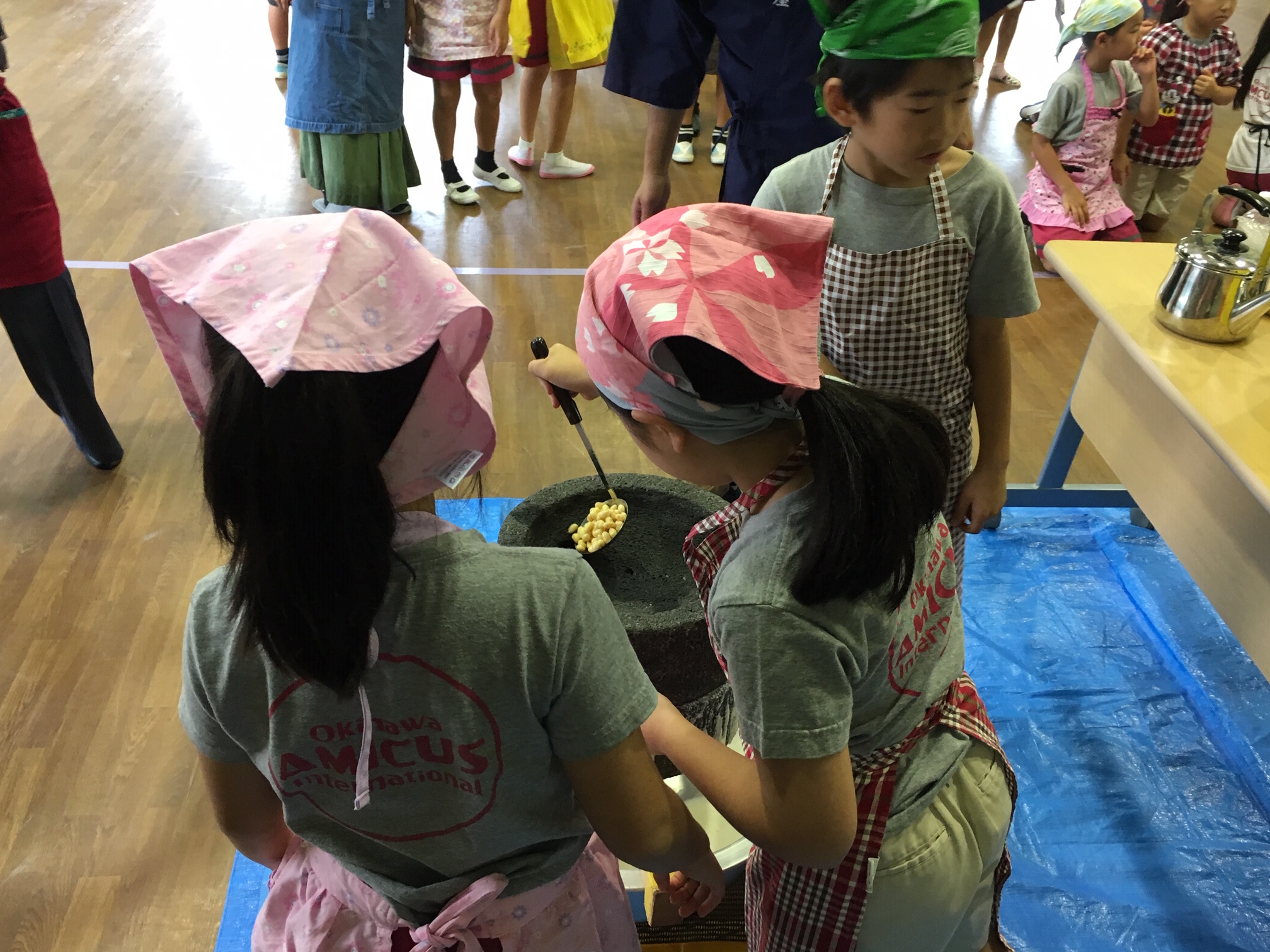As a cross-curricular program of the G3 Japanese and Social Studies curricula, students attempted to make tofu, using soybeans.
It was a real-life, hands-on experience for students to see how soybeans slowly but surely become tofu.
They first learned a summary of the process itself.
“We always blow on these small horns twice when we go around selling tofu. Who knows why?”
“You make it sound like you’re saying To~~~ fu~~~”
Wow, they got it!!!
(We don’t hear these Tofu-sellers’ horn much any more these days, and
it’s quite rare for the younger generation to have heard the sound)
Next, a ladle is used to scoop soybeans, and put them into a big stone mill.
Grasping the wooden handle, lively students started spinning the mill.
“Look, it’s coming out!”
The next step was to squeeze the tofu through a filter. The tofu crust which remains in the filter is called “okara” which is also good for cooking and eating in variety of styles. It’s amazing how soybeans can change forms, just like the title of the unit they currently study in Japanese class.
Some students had a taste of “nigari”, (the leftover liquid after extracting sodium chloride from seawater), which is needed to solidify tofu.
Then the tofu is retained in a boiling vat (large container) for almost 30 minutes. Can hardly wait for it to be ready!
In the meantime, some parents went ahead and prepared a tray full of “okara donuts”.
Looking quite delicious, and it’s healthy.
Students enjoyed eating a bowl of tofu, served with fish bonitos and shallots.
Tofu tasted really fresh, as the tofu flavor spread through their mouths.
The “okara donuts” were selling great too!
It’s time to say “thank you” to the tofu-seller for this great experience.
“Arigato~fu!!!”
(“Arigato” means “thanks” and they added the syllable “fu” to adjoin the two words)














